What if we want to find an expression that describes the rate of change (slope) at any point on a function?
EDS 212: Day 2, Lecture 1
Definition of the derivative
August 5th, 2025
Overview of Day 2 topics
- Derivatives
- Higher order & partial derivatives
- Differential equations (reading, understanding, solving, using)
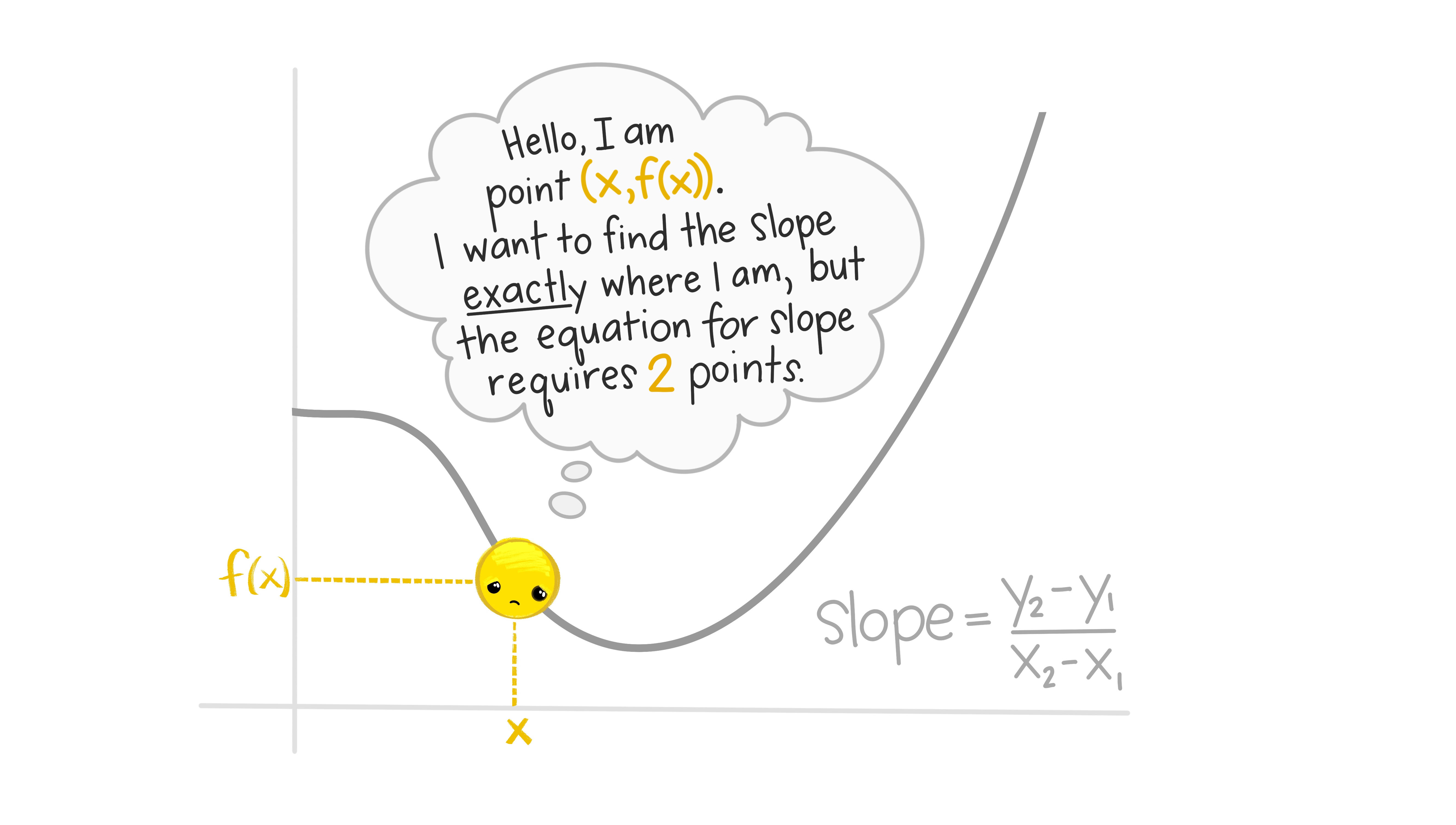
Artwork by Allison Horst

Artwork by Allison Horst
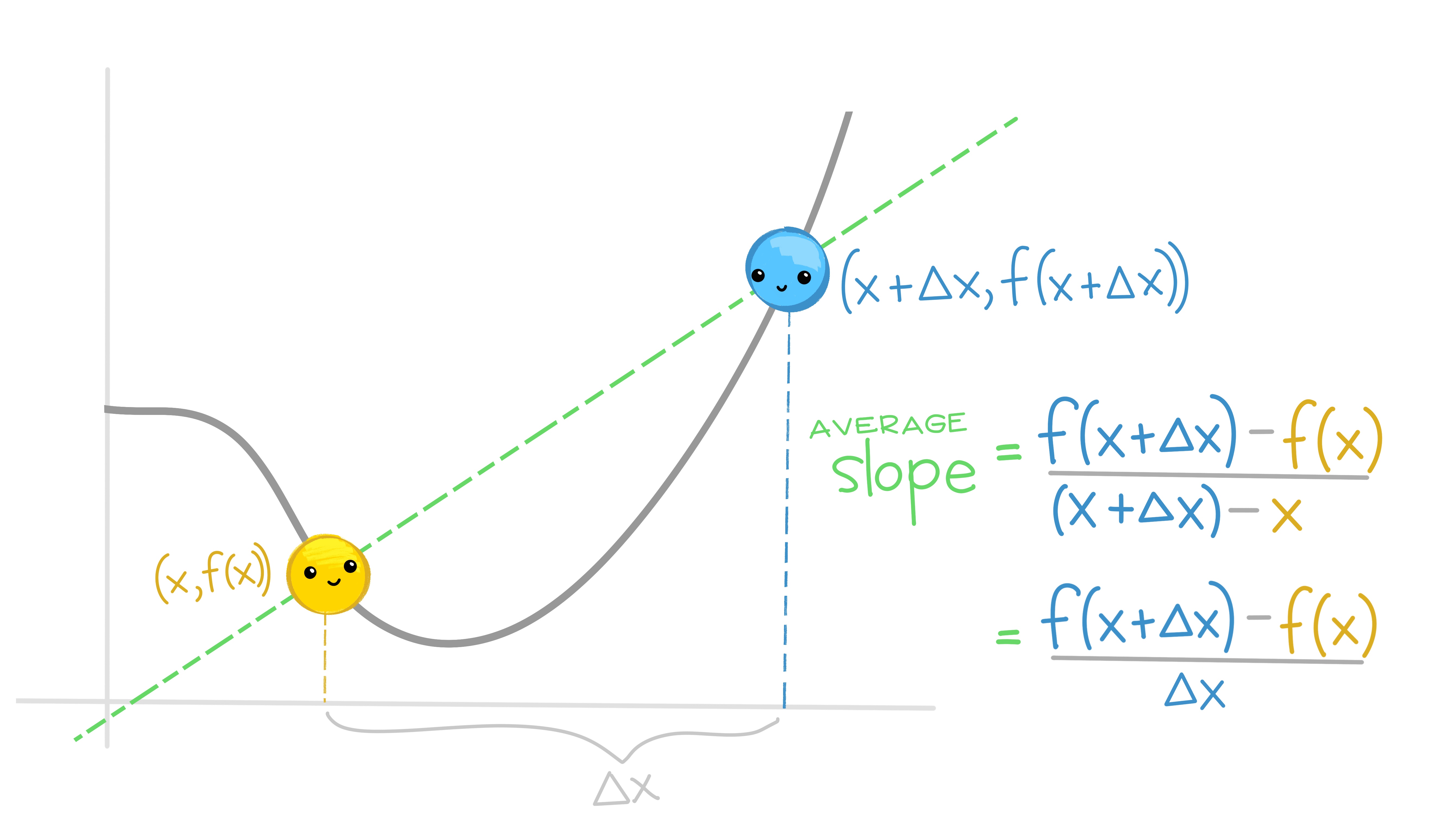
Artwork by Allison Horst

Artwork by Allison Horst

Artwork by Allison Horst

Artwork by Allison Horst

Artwork by Allison Horst
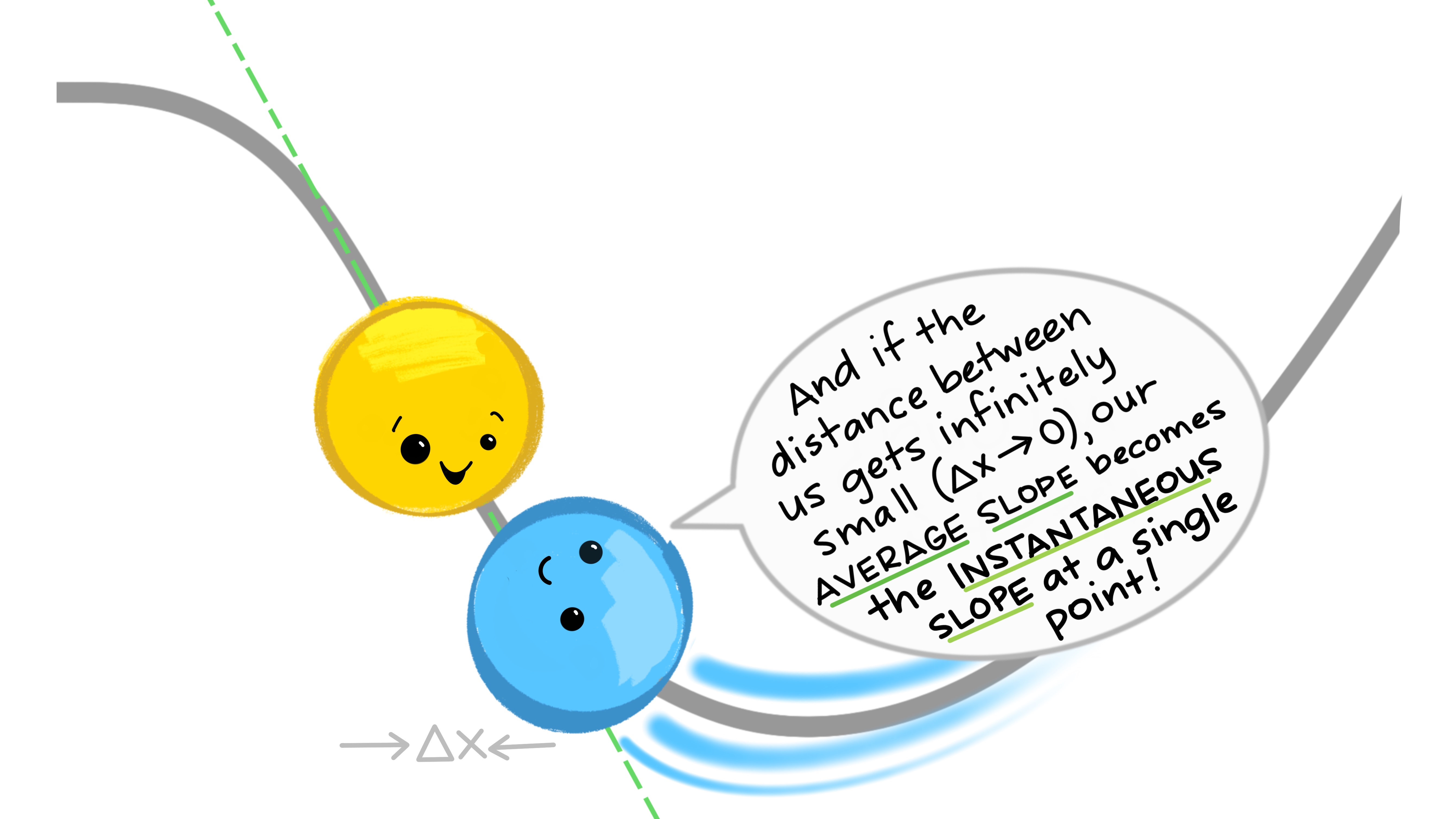
Artwork by Allison Horst
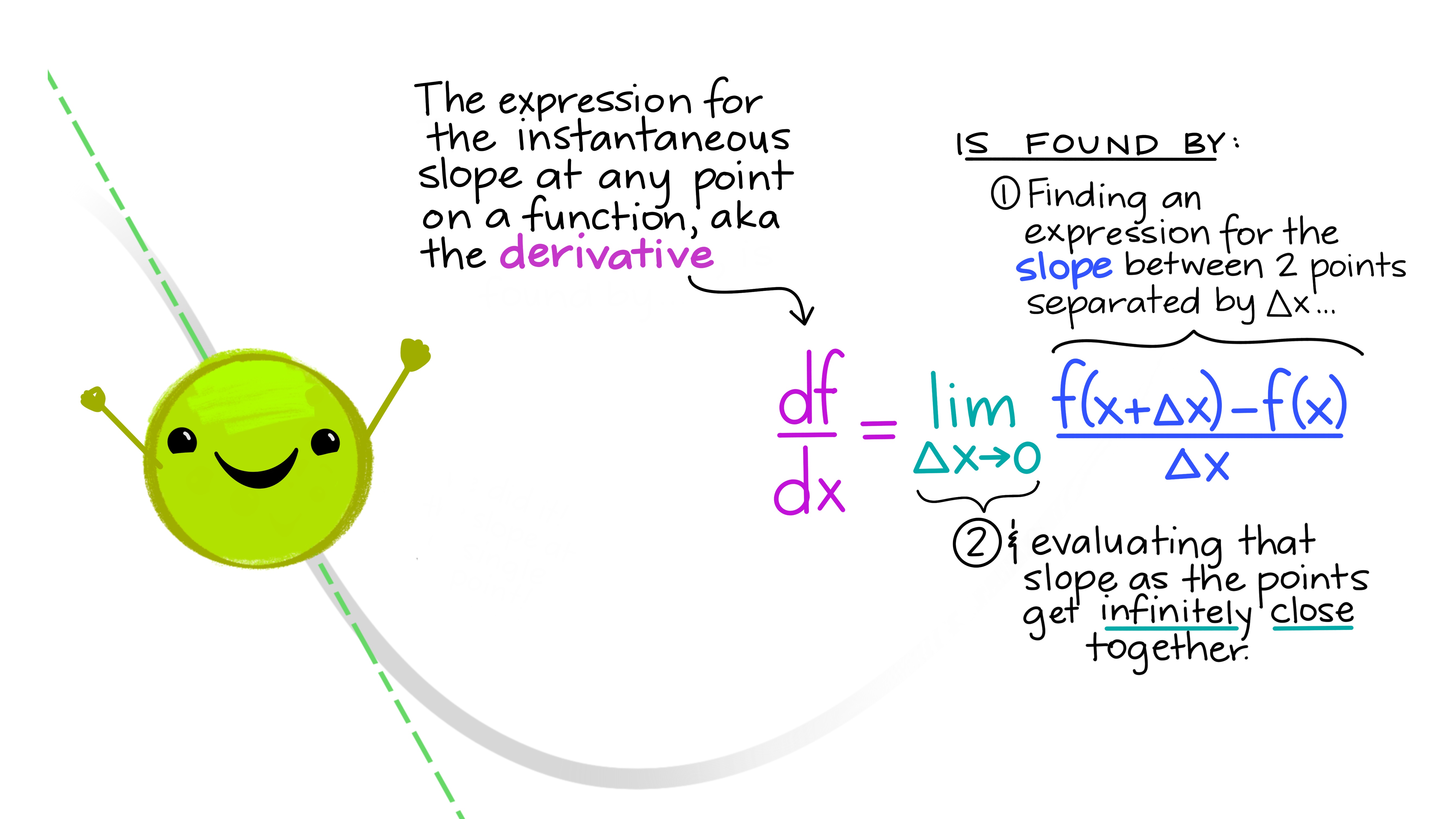
Artwork by Allison Horst
And that’s how we find derivatives
Evaluate the slope between two generic points on any function (separated by \(\Delta x\)) as \(\Delta x\) becomes infinitely small.
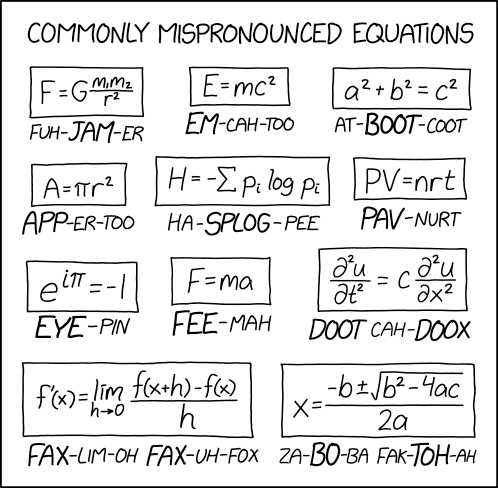
Image source: xkcd
Let’s try one (NOTE we’re subbing \(h\) for \(\Delta x\))
Find an expression that tells us the slope of the function \(f(x)=x^2-18.2\) at any value of \(x\).
\[\frac{df}{dx}=\lim_{h\to 0}\frac{f(x+h)-f(x)}{h}\]
\[=\lim_{h\to 0}\frac{((x+h)^2-18.2)-(x^2-18.2)}{h}\]
\[=\lim_{h\to 0}\frac{x^2+2xh+h^2-18.2-x^2+18.2}{h}\]
Which gets us to…
\[= \lim_{h\to 0} \frac{2xh+h^2}{h} = \lim_{h\to 0} {2x+h} = 2x\]
Your turn:
Find the derivative of the following using the definition of the derivative:
\[f(x)=4-x+3x^2\]
It’s cool to do that a few times, but it gets really tedious really fast.
So we have some basic derivative shortcut rules to speed it up a bit:
Power rule: \(\frac{d}{dx}(x^n)=nx^{n-1}\)
Constant rule: if \(k\) is a constant, \(\frac{d}{dx}(k)=0\)
Constant multiple rule: if \(k\) is a constant, \(\frac{d}{dx}(kx) = k\space\)
Sum and difference rule: \(\frac{d}{dx}(f(x)\pm g(x))=\frac{d}{dx} f(x)\pm \frac{d}{dx}g(x)\)
Yeah there are more - we’re not doing them.
ALL of those rules come from the definition of the derivative.

Reminder of what we’re doing mathematically:
Finding the slope between two generic points on a function as the distance between them gets infinitely small. That will give us an expression for the slope at any point on the original function.
Derivative of logs & exponents
- \(\frac{d}{dx}(e^x) = e^x\)
- \(\frac{d}{dx}ln(x)=\frac{1}{x}\)